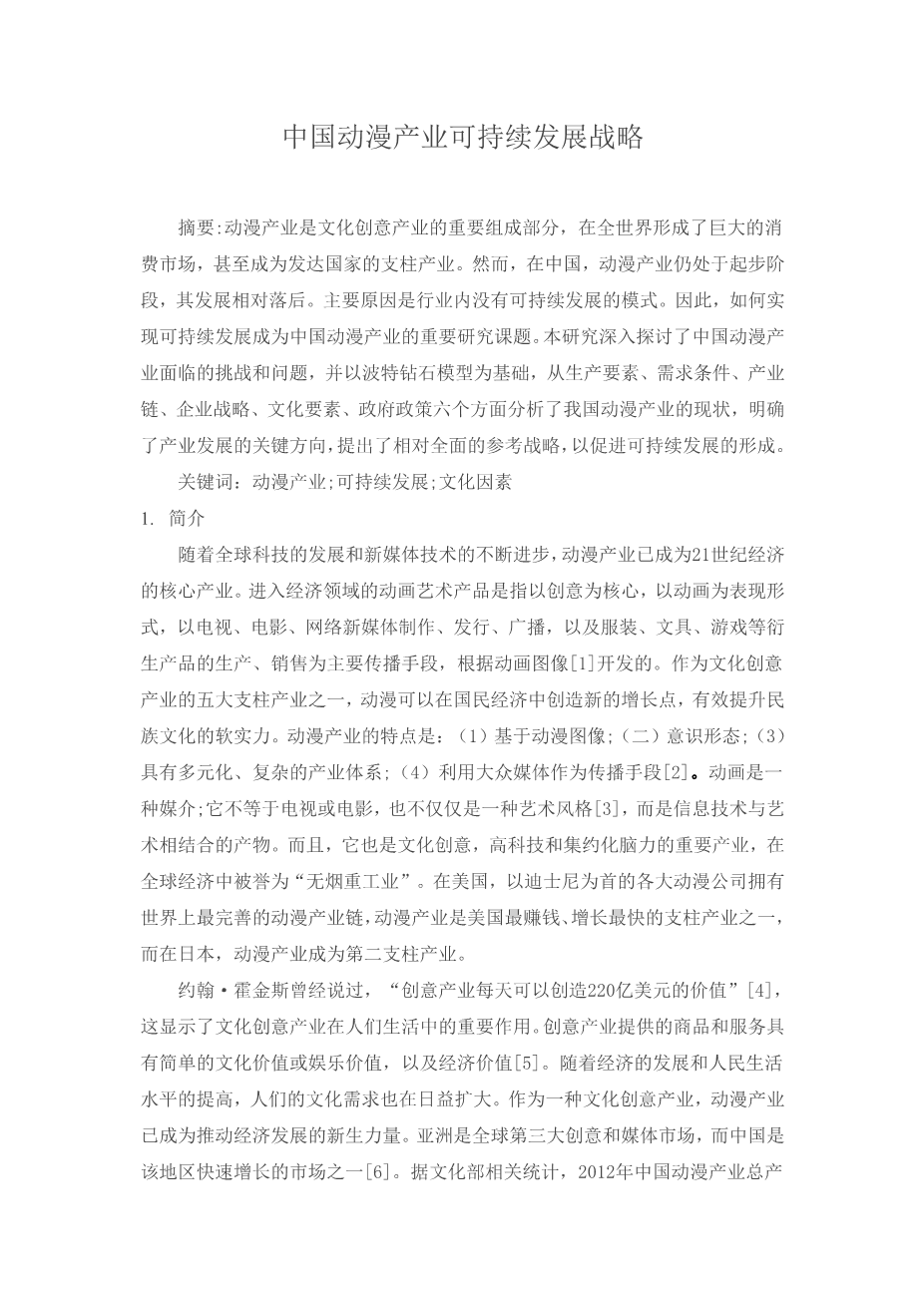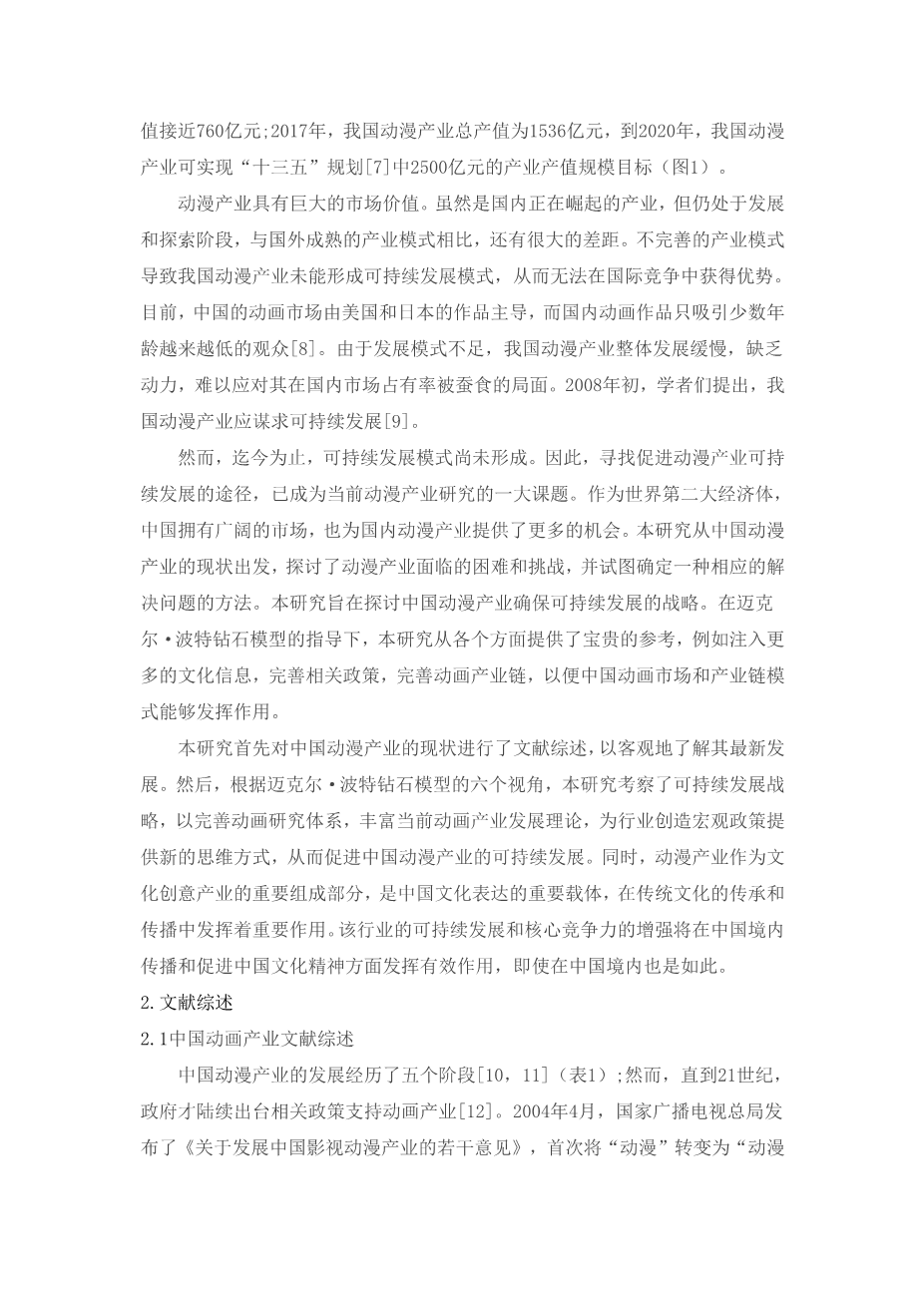Sustainable Development Strategy of Chinese Animation Industry
- Introduction
With the global developments of science and technology and the continuous progress of new media technology, the animation industry has become a core industry of the economy in the 21st century. The products of animated art entering the economic field refer to production, making, distribution, and broadcasting, with creativity as the core, animation as the form of expression, and television, film, and network new media as the main means of communication, as well as the production and sales of derivative products, such as clothing, stationery, and games, as developed based on the animated images [1].
The animation industry has a great market value. Although it is a rising industry in China, it is still in the stage of development and exploration, and compared with the mature industrial model abroad, there is still a big gap. The imperfect industrial model leads to the failure of Chinarsquo;s animation industry to form a sustainable development model, and thus, has been unable to gain advantages in international competition. to date, a sustainable development model has yet to take shape. Hence, finding a way to promote the sustainable development of the animation industry has become a major subject of current studies of the animation industry.
As the worldrsquo;s second-largest economy, China has a broad market, as well as more opportunities for the domestic animation industry. Proceeding from the status quo of the animation industry in China, this study probes into the difficulties and challenges faced by the industry and attempts to determine a way to solve the issues accordingly. This study aims at exploring the strategies for the animation industry in China to ensure sustainable development. With the guidance of the Michael Porter Diamond Model, this study provides valuable references from various aspects, such as infusing more cultural messages, perfecting relevant policies, and improving the industrial chain of animation, in order that Chinarsquo;s animation market and industrial chain model can be improved, competitiveness particular to Chinarsquo;s animation industry can be built, and the sustainable development of this industry can be achieved.
This study first conducted a literature review on the status quo of Chinarsquo;s animation industry to gain an objective understanding of its latest developments. Then according to the six perspectives of the Michael Porter Diamond Model, this study examined the sustainable development strategies in order to improve the research system of animation, enrich the current theories on the development of the animation industry, and provide a new way of thinking to create macro-policies for the industry, and thus, facilitate the sustainable development of Chinarsquo;s animation industry. Meanwhile, as an essential component of cultural and creative industries and an important carrier for the expression of Chinese culture, the animation industry plays a role in the inheritance and diffuseness of traditional culture. The sustainable development and enhancement of the core competitiveness of this industry will play an effective role in diffusing and promote Chinese cultural ethos within China,
Challenges and Problems Faced by Chinarsquo;s Animation Industry
The sustainable development of the animation industry requires a healthy and coordinated development model with content creation as the core, technological innovation as the means, culture as the driving force, and the industrial chain as the support in order that the developments of the animation industry, society, the economy, and cultural assets can constitute a circular sustainable development environment. Without the support of the industrial chain, the industry cannot develop healthily and continuously. If the industrial chain breaks, problems will occur within the industry. Therefore, all links must cooperate with each other to develop in a coordinated manner.
Contemporary Chinese animation has lost the original artistic characteristics of the Chinese school in its development process and blindly caters to secular aesthetics, thus, forming batch and large-scale assembly line production.
For a long time, Chinese audiences thought that animated films were made for children and belong only to children. Under the guidance of such a limited cognitive concept, most animation works default their target audiences to children at the beginning of their creation, which also formed the problem of the rigid positioning of ideological animation content, and animation shows to have the characteristics of puerility [8].
The main problem is that Chinese animation pays too much attention to the form and fails to focus on the contents and cultural connotations, which present simple expressions, and forms a tangible and godless formal and vacant language;
Compared with foreign animation industry models, there are a series of problems in Chinese animation, such as the incomplete industrial chain and unclear business model, as well as a lack of market operations, industrial operation experience, well-known IP brands, and small enterprise scale.
Sustainable Development Strategy of the Chinese Animation Industry Based on the Diamond Theory
4.1. Production Factors
4.1.1. Funds
The production factors in the animation industry mainly include capital, talents, and technology, among which capital is the most direct driving force to support development. constructing a capital investment guarantee system and setting up a professional financing guarantee institution for the animation industry have become the primary development strategy of the capital operation system of Chinarsquo;s animation industry at present.
4.1.2. Talents
剩余内容已隐藏,支付完成后下载完整资料


英语译文共 16 页,剩余内容已隐藏,支付完成后下载完整资料
资料编号:[604292],资料为PDF文档或Word文档,PDF文档可免费转换为Word


